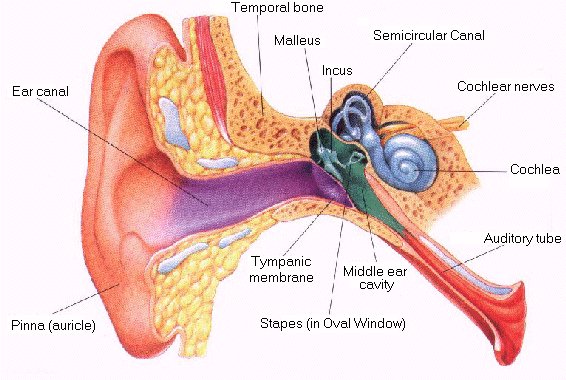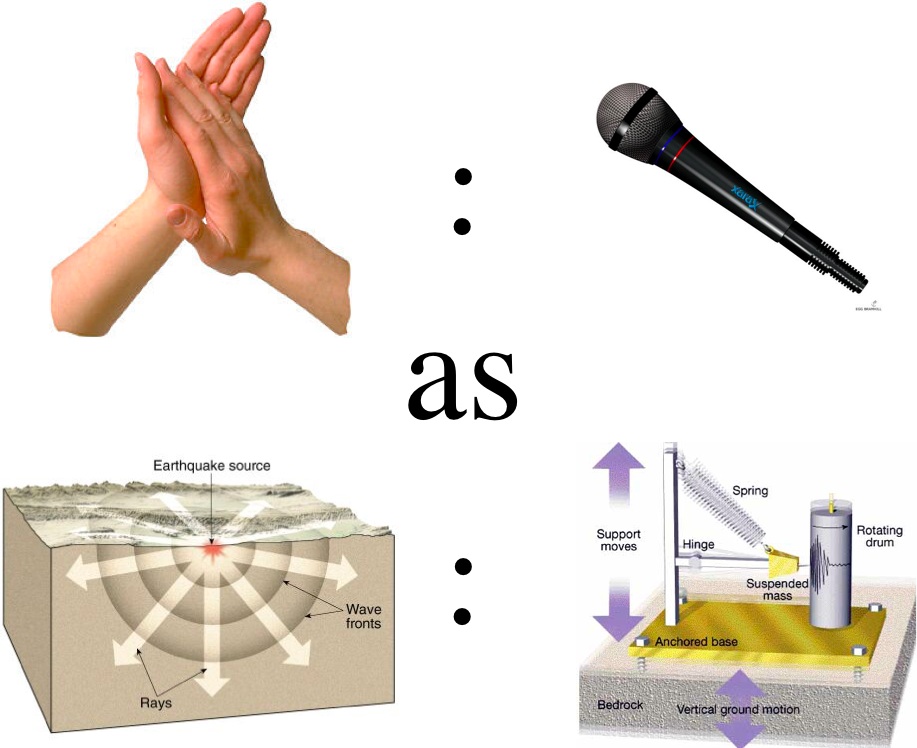SOUNDS OF SEISMOLOGY:
A primer on frequency and sound
This section is a primer on the definition of frequency, our range of hearing,
and how we shift frequency to bring waves of subsonic frequency into our range
of hearing.
Frequency is the measure of how often something happens, or in the words
of the Oxford dictionary, it is "the rate at
which a vibration occurs that constitutes a wave." It is measured in
repetitions per second, or Hertz (Hz). As shown below,
the range of frequencies of seismic waves are much lower than
those we can hear:

And this is a human ear. It picks up pressure waves in the air,
but only in a certain range of frequencies (marked above) can we recognize those
waves as sound.

SHIFTING THE FREQUENCY OF SOUNDS
What happens to sound when we change its frequency? To illustrate this question,
we take a recording of a simple clap of hands, recorded with a microphone
and slow down its frequency.
Hand Clap, slowed down
Making sounds from seismic data
By analogy to a hand clap, an earthquake emits waves in the solid parts of the earth
that can be recorded by a seismometer:

The waves that emanate from earthquakes occur much lower ranges
of frequency that what we can hear. In order to hear these waves, we must
shift the frequencies (in our computer program).

Here is an example of an earthquake
wave sped up into our range of hearing, and then several more
examples of the same wave sped up several times, still within our range
of hearing. Each bang is the same earthquake.
Earthquake, sped up
(Niigata-Chuetsu Earthquake, July 16, 2007, Magnitude 6.6)



